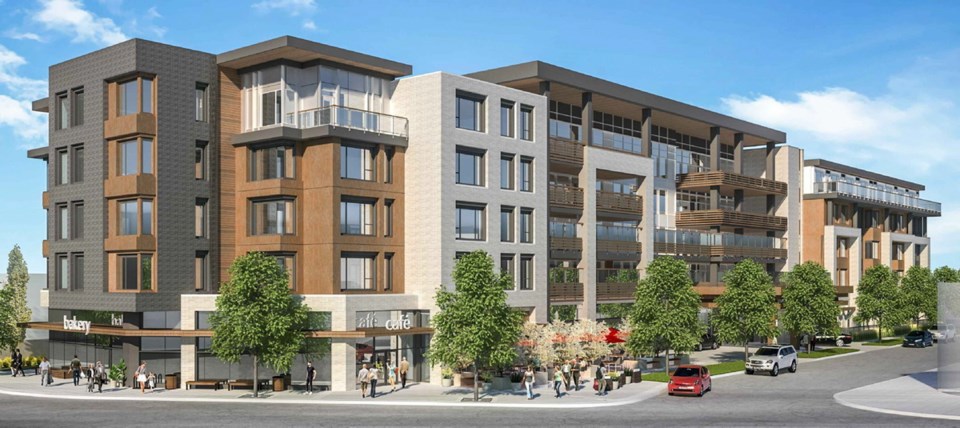A new five-storey care facility for those with Alzheimer’s and dementia has been given a green light by Victoria councillors following a public hearing.
While some nearby residents expressed concerns about the massing and height of the proposed 137-suite seniors rental building at 1900-1912 Richmond Rd., others spoke of the growing need for dementia care.
The development will be about two-thirds “memory care” suites and one-third assisted-living suites.
“It’s difficult because it’s the Official Community Plan coming to life looking forward to the next 100 years in a neighbourhood [which], as one gentleman said, was built 100 years ago. That is always a big challenge for us,” said Mayor Lisa Helps in recommending the building be approved.
Milliken Real Estate Corp., which is partnering with Amica Senior Lifestyles on the project, offered $1 million to the city’s housing reserve. It also agreed that planned ground-floor commercial space will be for medical uses only.
At the recommendation of Coun. Sharmarke Dubow, councillors agreed to earmark the $1 million for seniors’ housing.
Kate Milliken Binns, president of Milliken Real Estate, said within a five-kilometre radius of the site, almost 24,000 residents are age 70 or older, and that number is expected to increase to almost 30,000 by the year 2028 — an increase of 26.5 per cent.
Only 1,700 senior-living suites serve that community, she said, and only two buildings have dedicated, secure memory-care suites.
She noted there are more than 500,000 Canadians with dementia and that number is forecast to rise to 937,000 by 2031 — an increase of 66 per cent.
The care facility, which because of higher ceilings will present more as a six-storey building, would replace an older four-storey medical building at Fort and Birch streets known for its Rod of Asclepius symbol — depicting a snake entwined on a rod — fixed on the exterior, facing Fort. It’s an ancient symbol associated with medicine.
“The ground floor is actually taller than a typical residential building because of the inclusion of the retail space, which requires greater height than typical residential floors,” Milliken Binns said.
Each residential floor is also slightly higher than a typical residential building to accommodate equipment such as lifts and to improve residents’ quality of life, she said. “Our residents are frail elderly who will spend much of their time in the building. By providing them with gracious ceiling heights, these residents are more comfortable and their quality of life is improved.”
Milliken Binns said the existing building is about 70 per cent vacant and at the end of its useful life, “with elevators that we can’t get parts for anymore and windows that are very drafty and can’t be replaced.”
Some councillors, such as Coun. Laurel Collins, noted the proposal doesn’t include any affordable units. Collins said she has been going through the challenging process of looking for assisted living for her father, who has terminal cancer, “and he wouldn’t be able to afford to live in this development.”
Helps said the $1 million being contributed to the housing trust fund could ultimately result in up to 100 units of affordable seniors housing.
“The beauty of having the trust fund is the city puts in $10,000 per bedroom and then that turns into a heck of a lot more money matched by the federal and provincial, and in some cases, the regional government as well,” Helps said.
“That’s a very good way to achieve affordability.”
In response to neighbours’ concerns, the developer agreed to discuss lightening the building’s colours and landscaping to the satisfaction of senior staff.



